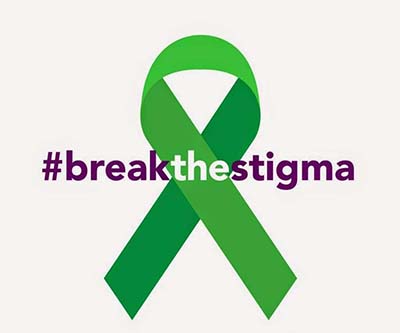 It can happen to any of us. One week we feel fine, the next we’re overwhelmed with feelings of anxiety, lethargy, even depression. Or maybe a change in demeanor happens to someone we know or care about – our spouse or child may struggle with stress, depression or addiction. In fact, one in five American adults is affected each year by a mental, behavioral, or emotional disorder.1
It can happen to any of us. One week we feel fine, the next we’re overwhelmed with feelings of anxiety, lethargy, even depression. Or maybe a change in demeanor happens to someone we know or care about – our spouse or child may struggle with stress, depression or addiction. In fact, one in five American adults is affected each year by a mental, behavioral, or emotional disorder.1
Knowing how and where to get help for ourselves or others can be daunting. People experiencing mental health or substance use issues may be reluctant or embarrassed to seek help. Others are unable to find, get to, or afford care. In 2016, less than half of U.S. adults with a mental health condition received mental health treatment.2 The good news is that local mental health resources such as free confidential crisis phone lines and online support are available 24/7 to those in need.
Don’t overlook another possible option. People covered by employer-sponsored benefit plans often have access to mental health care. Support can range from confidential employee assistance programs – or EAPs – to help with connecting to a mental health provider for an in-person or online visit for personal issues such as depression, substance abuse, coping with grief and loss and medication management among other personal challenges.
Difficult mental health concerns can be dealt with in the same way other health care issues are addressed: making a call or going online and getting connected to care. To better understand what benefits and resources may be available to you, call the number on the back of your health plan ID card to talk to an advocate, or visit a dedicated member portal for information that may help you:
- Search for care options. Advocates and 24/7 online tools can provide information on where to find care near you. Many plans offer the option of seeing an in-network provider in person or scheduling a confidential virtual visit via a smartphone or computer.
- Understand the cost of care. While costs can vary, some mental health services are included in your health benefits plan. This could include seeking a referral or getting help to see an in-network provider which could result in savings.
- Shorten the wait-time to see an in-network provider. Some benefits plans can help members secure an appointment within five days.
Knowing where and how to get help for mental health issues is one of the best things we can do for ourselves or those we care about. Take a few minutes today and check into local crisis phone lines, 24/7 online support or available employer-sponsored benefits.
To be most effective in crisis situations, it’s important to remain calm and collected. If there are imminent safety concerns, the person should be transported to an emergency room (ER) if possible. If they are not safe for personal transport to the ER, calling 911 may be necessary.
For more information and links to mental health support resources in your area, visit the National Alliance on Mental Illness at www.nami.org or call the NAMI HelpLine at (800)-950-NAMI (6264).
- National Institute of Mental Health. Available at: https://www.nimh.nih.gov/health/statistics/mental-illness.shtml#part_154785
- National Institute of Mental Health. Available at: https://www.nimh.nih.gov/health/statistics/mental-illness.shtml#part_154790
Dr. Tony Sun, M.D., is Chief Medical Officer for UnitedHealthcare of Kansas.
